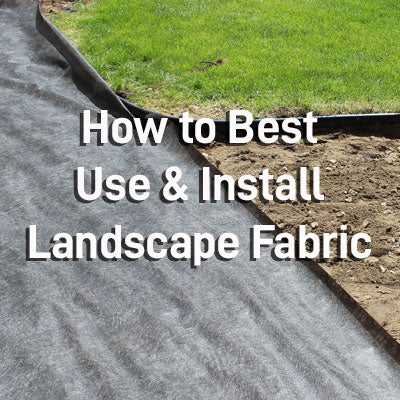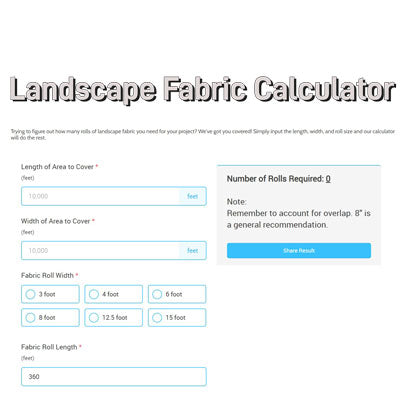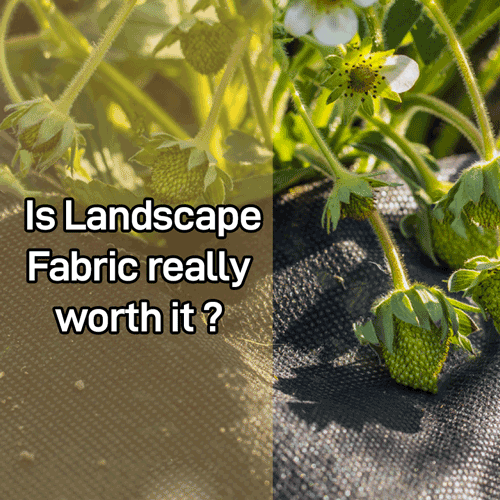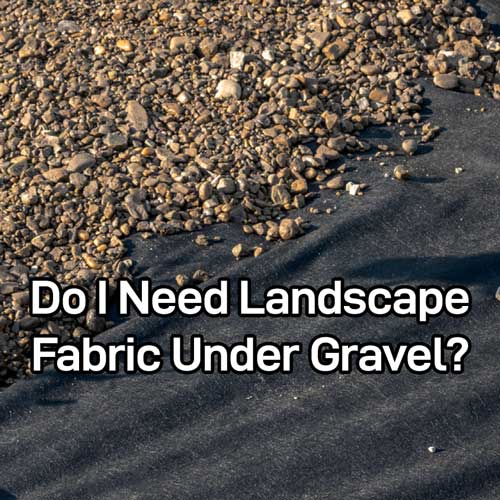Stabilization Fabric - Woven
Woven geotextile fabric, also known as soil stabilization fabric or driveway underlayment, plays an essential role in building a strong separation layer between the subgrade soil and the base rock used to stabilize the drivable surface above. In addition to providing a separation layer, a commercial-grade stabilization fabric can also provide a drivable surface that is less prone to potholes and erosion ultimately increasing the longevity of the surface while reducing maintenance.
The following fabrics are classified by material grade. The higher grade fabrics provide more water permeability as well as greater tensile strength. Standard grade is the most commonly installed stabilization fabric. Medium and heavy grades are typically installed on projects which have very specific technical requirements specified by the project engineers.
- Woven geotextile provides excellent base support for roadways, parking lots, paver patios, and driveways.
- Reduces the amount of base materials required for the project
- Excellent puncture and tear resistance
- Meets most DOT specs



Standard Grade Woven Stabilization Fabric
Woven stabilization fabrics are ideal for separating the subgrade soil from the aggregate base layer. This is a very popular type of geotextile that has been specified for use by public works and private projects for 20+ years.
It can be commonly be found for use under aggregate driveway or road applications. An economical option perfect for installations where puddling water and fabric permeability is not a concern.

Intermediate Grade Woven Stabilization Fabric
Intermediate grade woven stabilization fabric is a higher tensile strength permeable geotextile. Perfect for projects where it is essential that water is able to flow through the fabric and into the soil below.
Additionally, the intermediate grade fabrics provide a higher tensile strength which can handle heavier loads and are more resistant to deformation and damage from downward pressure than the standard grade stabilization fabrics.

Heavy Duty Grade Woven Stabilization Fabric
Heavy duty grade woven stabilization fabric provides ultra-high tensile strength at low strain rates to increase project performance and life. This grade of fabric is designed for high permeability and flow through rates for the most demanding installations.
Heavy duty grade stabilization fabrics can be used in separation, stabilization, filtration, drainage, and reinforcement applications.
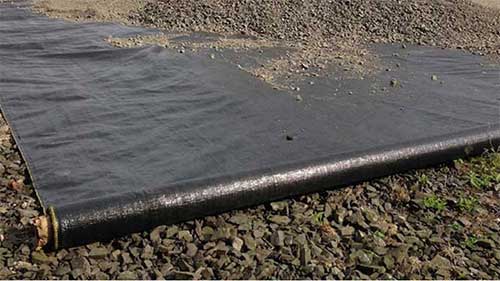
Woven Stabilization Fabric Used for Driveway
General Guidance - Driveway Fabric
So, you have decided to construct a gravel driveway in place of the old one you presently have. It will take some work and time but you might be pleasantly surprised when it's done. Just make sure you follow all necessary steps and make sure you have all the materials you are going to need.
You need Geotextile road fabric also called driveway fabric to create a great driveway with a supportive base layer for a more stable surface that will resist ruts and potholes.
Preparing The Surface For Your Driveway
Before anything else, you have to prepare the surface for your driveway by removing debris such as rocks and stumps which could easily tear the fabric. Next, you have to level the surface without creating a trench that will hold water. If you have an area that holds water, use a pipe or drain to remove the water.
Place the fabric directly on the prepared surface by rolling it out so it's flat and try to keep down any creases or folds. If you need to, overlap the fabric by 1 to 3 inches and then, if needed, use pins or staples to hold it in place. You can also use dirt or other heavy material to hold the fabric in place before dumping the rocks on top.
Place the gravel and compact it in 6 to 8-inch lifts. You can use a dump truck or loader driven over the fabric without causing damage but avoid any quick stops or turns. The best approach is to dump the stone on the stabilized fabric and then push it into the fabric for protection. The idea is to create a slight crown in order to provide water drainage on the driveway sides.
What Kind Of Rocks Should Be Used?
The rocks should be crushed and angular with a one-inch diameter and only 10% dust. Limestone is a good choice but if you prefer you can use other stone materials.
Some good choices include:
Dense Grade Aggregate (DGA) or Crusher Run
The advantage of using this fabric, you will not need stones larger than one inch, just make sure you do not use round stones.

Rocks to Use with Woven Fabric

Woven Stabilization Fabric Used for Road
Mistakes You Should Avoid When Creating A Gravel Driveway
If you do not have a problem with the extra maintenance needed for a gravel driveway, the cost will be a great deal less than a paved driveway and will last just as long. If constructing this gravel driveway is the first time for you, there are mistakes you must avoid:
Stay Away From Soft Spongy Ground
Do not spread gravel on ground that is soft. If the soil is loaded with leaves, grass, roots, weeds, or other debris you will have a spongy surface that will lead to problems down the road. Get rid of topsoil and strip the soil down to the hard rock. It will help create a more stable and dependable bed. You can always use the topsoil somewhere else.
Poor Drainage
If your driveway is not correctly leveled, drainage will become an issue. An unleveled driveway will allow water to erode and damage the driveway. You will end up with a mud hole with silt from below coming up to the gravel. The silt will loosen the gravel and lose the needed friction which will cause weakening and separation.
Prevent Gravel From Moving
To prevent the gravel from moving, a gravel paver product can be optionally used to prevent gravel from moving. It will prevent rutting and offer a very stable surface. Gravel Pavers come in many different shapes and sizes and are made from either plastic or a heavy-duty geotextile. Another good option is installing sides to the driveway. The sides can be made of wood or you can create a retaining wall with brick or concrete blocks. These materials will prevent spreading outside the parameters of the driveway.
Avoid The Wrong Size And Shape Of Gravel
The base layer of gravel fragments should be at least 3 to 4 inches in diameter or you will experience shifting and sinking when you drive over it. The gravel fragments must be angular with sharp edges. Rounded rock fragments are not a good choice because they cannot lock into place with other pieces. Sharp-edged fragments are just as solid as a single large rock. The gravel laid on the final top layer should not be any larger than a golf ball. The total thickness of the driveway, with layers of different sizes of gravel, should be around 12-inches.
Each Layer Must Be Properly Compacted
Even though the driveway should be constructed of various layers of gravel, each layer must be compacted properly. If not, the driveway will not keep its shape. Each layer should be around 4-inches thick and the gravel fragments should be smaller than the layer below it. Each layer must be properly compacted by tamping down each layer using a hand-operated machine or roller.

